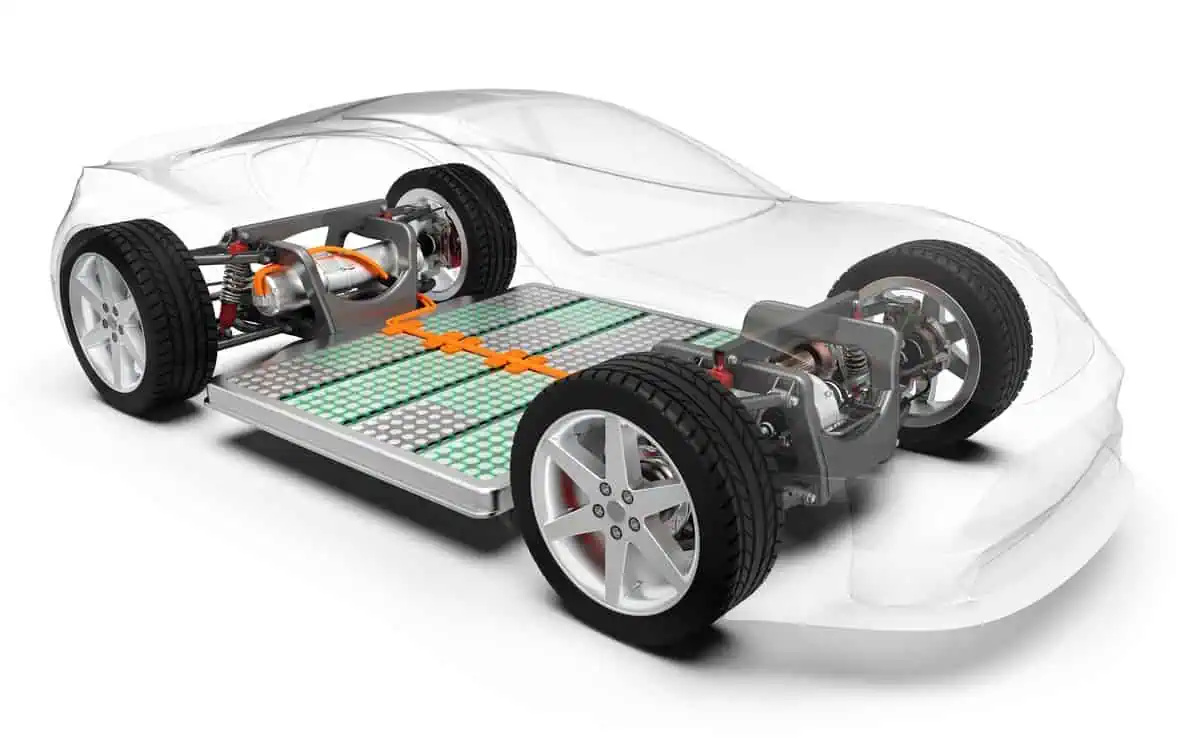San Diego-based company Smartville has discovered an efficient solution to deal with the influx of retired electric vehicle batteries by giving them a “second life,” as per CBS8.
Smartville’s Modular Assembly Battery System
The retired electric vehicle batteries are packed and mounted on the side of a commercial building in Miramar, San Diego, California. Interestingly, excess energy from the building’s solar panels is stored in the batteries until it is needed.
The President of Smartville pointed to the building’s roof. “You can’t see it, but there’s a huge rooftop solar array up there and that array overproduces (electricity) during the day,” Ferry said on a sunny day last week.
“We’re now taking that excess and during the critical peak (time for California’s grid), from 4 to 9 p.m. when the sun goes down, we discharge that energy back into the library and we power the building.”
The process may sound simple, but Smartville’s energy storage technology (MOAB) integrates two separate battery packs into a single system.
Notably, Modular Assembly Battery System was what MOAB originally stood for. However, it is now the official brand name for the technology used by Smartville.
According to Ferry, “Our technology is able to integrate battery packs, not only in different states of health and different histories but actually from different manufacturers (Tesla and Nissan) and control them in a reliable way.”
Smartville’s project objective
The building can then rely less on the electrical grid by using the batteries at night, when no solar energy is being captured, or in the case of a brownout or blackout.
“This has been the goal from day one,” said Evan Bierman, Chief Operating Officer of Smartville Inc. “To be able to better use second life batteries, reduce emissions and bring a cleaner future along with U.S. domestic manufacturing to the United States and to San Diego.”
How can the MOAB technology help California
According to San Diego Union Tribune, the retired batteries include one Tesla and several Nissan Leafs. As the number of electric vehicle registrations in California continues to increase, Smartville has found new uses for these batteries from prominent automakers.
Before needing to be recycled, the retired batteries can still work between 50% and 75 % of their peak utilization.
“That battery can still be used for a long time,” Bierman added. “So, what we do instead of recycling or throwing it away, we’re using that battery to provide a service. We are harvesting excess green solar energy and putting it on the grid to help reduce emissions and to help stabilize the grid.”
“Eighteen percent of new vehicle sales in California are electric vehicles and that number is rising,” said David Hochschild, the Chair of the California Energy Commission. “We’re putting almost a thousand electric vehicles a day on the road in California, and we’re manufacturing over 2,000 electric vehicles a day here in our state. So this is filling a very important kind of hole in the mosaic.”
The project received funding from the California Energy Commission. Meanwhile, a non-profit organization Cleantech San Diego aided the startup to have additional funding.
“Adding one and one together we see a large supply flow of retired batteries,” CEO of Smartville, Antoni Tong, told CBS 8. “To give you an idea, nationwide by 2030 we have about an annual supply of 100-gigawatt hours worth of batteries. Those can be put in a good place to provide residual value such as stabilizing the grid and provide businesses energy storage they need.”
Smartville’s future plans
After a successful debut, Smartville intends to fully commercialize the process in the following year throughout the state and eventually the country.
“Eventually, EV adoption goes beyond California,” added Tong. “We have the east coast, we have the Pacific Northwest, we’re going to set up posts for repurposing those batteries and providing energy storage in return.”
The process offers a more intelligent alternative for the batteries both after their peak and before recycling. It aids in reducing grid stress and can be expanded upon for other nearby commercial structures.






